How to Maintain Carbon Fiber Eyeglass Frames
To properly maintain carbon fiber frames, you must use a pH-neutral cleaning solution and a soft microfiber cloth for regular cleaning. Always store them in a hard-shell case to prevent impact damage. Avoid all alcohol-based cleaners, household chemicals, and extreme heat, as these can permanently damage the protective epoxy resin that binds the fibers together.
The Foundation of Care: Understanding Carbon Fiber’s DNA
Understanding carbon fiber’s unique composition is the most important step for proper maintenance. This knowledge transforms basic cleaning into professional frame preservation. In my two decades of teaching designers, I’ve consistently observed that the biggest mistakes happen when people treat carbon fiber like it’s just another plastic or metal.
What is Carbon Fiber?
At its core, carbon fiber is a composite material, not a monolithic one. This means it’s built from two primary components working together: incredibly strong carbon threads and a protective epoxy resin that holds them in place. The quality of your maintenance routine depends entirely on respecting the relationship between these two parts.
- The Carbon Threads: These microscopic filaments, woven together like a high-tech fabric, provide the material’s legendary strength and rigidity. They are the structural backbone of your frames.
- The Epoxy Resin Matrix: This is the clear coating that binds the fibers together and gives the frame its smooth surface finish. It protects the underlying threads from the elements.
The Bottom Line: While the carbon fibers are almost indestructible, the epoxy resin is the component you are actually cleaning and protecting. All proper maintenance is focused on preserving this protective layer.
The Critical Role of the Epoxy Resin
The resin is what your hands, your cleaning cloths, and the environment touch every day. It serves two functions that directly impact how you care for your frames.
- Structural Integrity: The epoxy acts as the glue that holds all the individual carbon threads in their precise arrangement, creating the composite material’s strength.
- Protective Topcoat: The resin creates the smooth, finished surface you see and feel. This topcoat is what gives the frames their distinctive glossy or matte appearance.
Critical Warning: The resin matrix is your frame’s most vulnerable component. Acidic substances from skin oils or harsh chemicals can etch the clear coat in minutes, while UV exposure can cause it to fade and degrade.
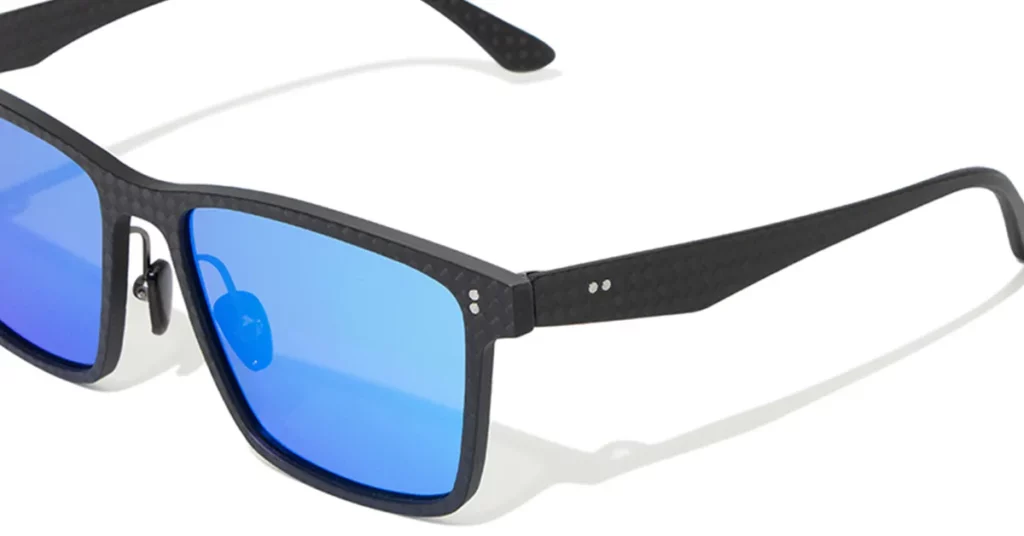
How Manufacturing Informs Maintenance
Not all carbon fiber is created equal, and knowing how your frames were made helps you provide better care. The two most common construction types have different visual and structural properties.
Weave vs. Forged Carbon Fiber
Understanding your frame’s construction type helps you set realistic expectations for its appearance and durability.
| Construction | Visual Style | Key Strength Characteristic |
| Woven Carbon Fiber | The classic, geometric checkerboard pattern. | Excellent multi-directional strength due to the interlocking strands. |
| Forged Carbon Fiber | A modern, marbled, or stone-like look. | Strength is spread evenly in all directions due to random fiber orientation. |
The Bottom Line: While both types are exceptionally strong, their care protocol is identical because both rely on a protective resin finish. The visual pattern does not change the maintenance requirements.
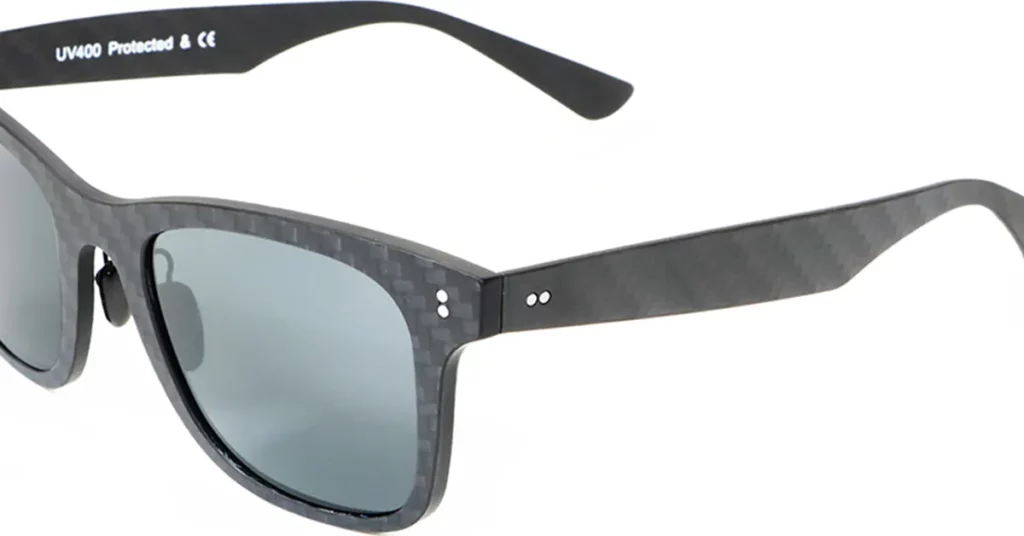
Assembling Your Professional Maintenance Toolkit
Using the correct tools is non-negotiable for the longevity of your carbon fiber frames. The wrong product can cause irreversible damage in a single cleaning session.
The Essential Cleaning Agent
You must select a cleaner that is powerful enough to remove oils but gentle enough to leave the resin unharmed.
Definition: A pH-neutral cleaning solution is one that is neither acidic nor alkaline. This chemical neutrality is the single most important factor in a cleaning agent, as it will not corrode the frame’s delicate epoxy resin matrix.
Best Practice: The safest and most effective solution is a simple mixture of a few drops of mild dish soap in a bowl of lukewarm water. For a professional-grade option, you can use a pre-mixed product like Optimum No Rinse.
Critical Warning: Never use alcohol- or ammonia-based cleaners. Products like Windex or lens wipes with alcohol are designed for glass, not for the delicate resin of a composite frame. They will strip the finish, causing a cloudy or hazy appearance over time.
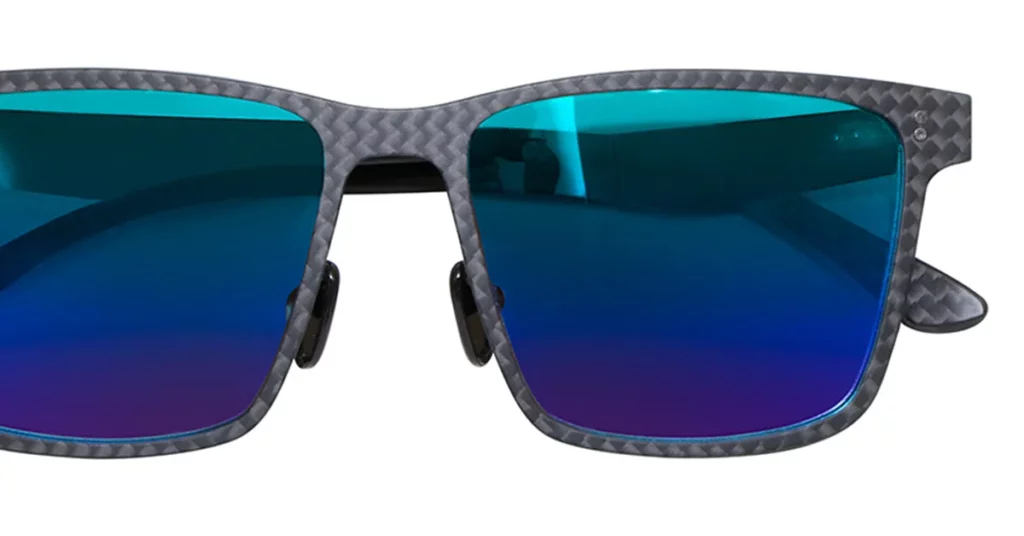
The Essential Cloths & Storage
The tools you use to apply cleaner and store your frames are just as important as the cleaner itself.
Requirement: You need high-quality, non-abrasive microfiber cloths. This means you should use a cloth that is specifically designed for delicate surfaces like camera lenses or automotive paint. These cloths trap dirt instead of grinding it into the surface.
Simple Analogy: Using a paper towel or an old t-shirt to clean your frames is like washing a luxury car with sandpaper. While you may not see the damage immediately, you are creating thousands of micro-scratches that will dull the finish.
Requirement: You must use a hard-shell protective case. Carbon fiber is incredibly strong, but it is also brittle. This means it resists bending but can crack under a sharp, direct impact. A hard case prevents the impacts and crushing force that cause this kind of damage.
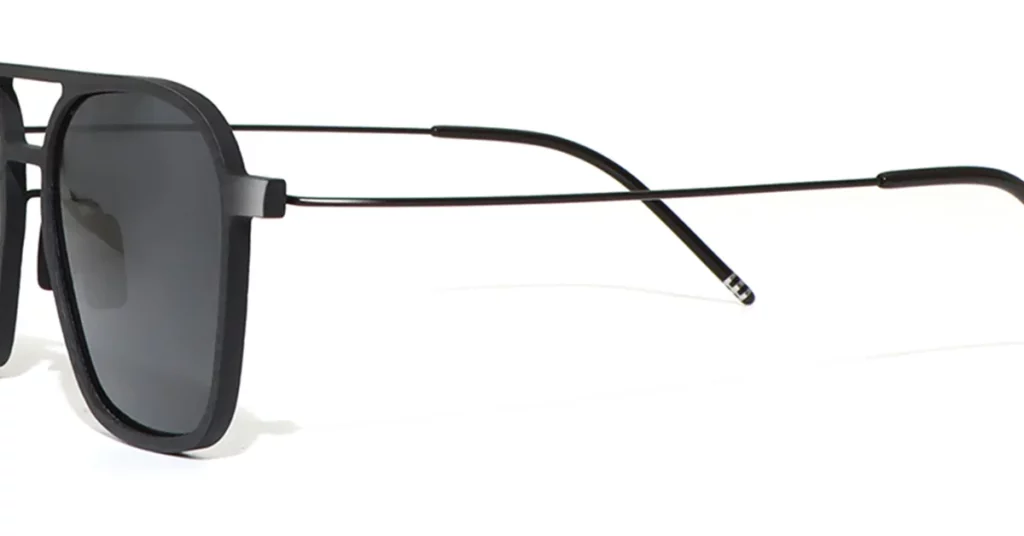
The Core Maintenance Protocol
Follow this simple, two-part routine to protect your investment and keep your frames in pristine condition for years. This is the exact process used by eyewear professionals.
Daily Care: Protecting from Corrosive Oils
Your skin produces natural oils that are slightly acidic. If left on the frame, these oils can slowly eat away at the resin.
The Step: A Thorough Wipe-Down with a Dry Microfiber Cloth.
The Action: At the end of each day, use a clean, dry microfiber cloth to gently wipe down every surface of the frame. Focus on the points of contact: the nose pads, the temple arms, and the area above the lenses.
The Rationale: This simple, 30-second habit removes the corrosive oils before they have time to damage the protective resin topcoat, dramatically extending the life of the frame’s finish.
Weekly Care: Removing Abrasive Debris
Deeper cleaning removes the abrasive dust, grime, and other contaminants that a dry cloth can’t handle.
The Step: A Safe and Effective Wet Wash.
The Action:
- Rinse the frames under lukewarm running water to dislodge any loose debris.
- Apply your pH-neutral soap solution with a soft, clean microfiber cloth.
- Wipe every surface gently, using straight, methodical motions.
- Rinse the frames thoroughly with clean, lukewarm water.
- Dry them immediately with a separate, dry microfiber cloth.The Rationale: This process safely lifts and removes abrasive particles without scratching the surface. Remember to always dry the frames completely, as letting water evaporate on the surface can leave mineral deposits, or “water spots.”
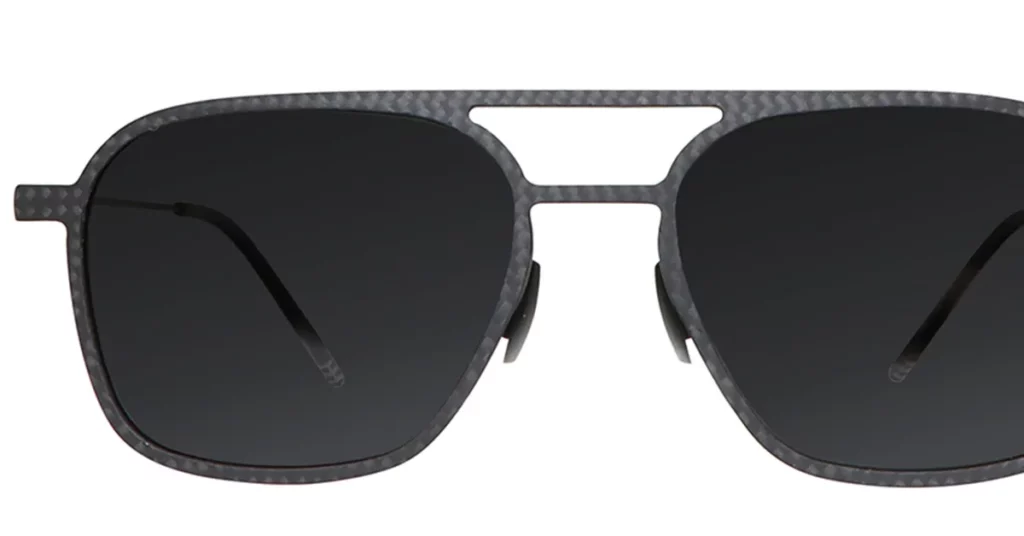
Common Mistakes & Hazards to Avoid
Protecting your frames is as much about avoiding bad habits as it is about adopting good ones. Be aware of these common environmental and chemical dangers.
Damaging Chemical Exposures
Common Mistake: Many people assume that if a product cleans glass lenses, it must be safe for the frame. This is incorrect. Household glass cleaners, alcohol-based wipes, and acetone are formulated for inorganic materials like glass and will permanently damage the organic resin of your frames.
Prevention List: Always keep your frames away from these substances:
- Aerosol sprays (hairspray, sunscreen, deodorant)
- Alcohol-based products (perfume, hand sanitizer)
- Acidic substances (citrus juice, vinegar)
- Petroleum-based products (many lotions)
Temperature and Storage Blunders
While the carbon fibers themselves are stable in heat, the resin that binds them is not.
Critical Warning: Never leave your carbon fiber frames in a hot car, near a heater, or in direct, prolonged sunlight. Extreme heat can compromise the resin, causing it to soften, bubble, or discolor, which permanently weakens the frame’s structure. Always keep them in their case in a temperature-stable environment.
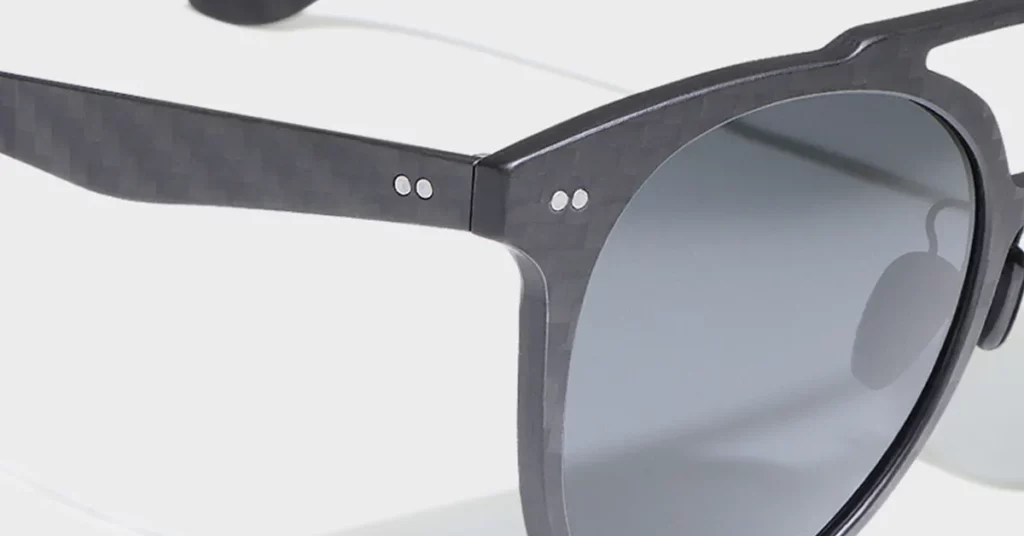
Advanced Care & Troubleshooting
Some situations require special attention or the help of a professional. Never attempt to perform adjustments at home.
Adjusting Your Frames: For Professionals Only
This is the most important rule for carbon fiber ownership.
The Fact: Carbon fiber cannot be heat-adjusted or bent like acetate or metal frames.
The Explanation: The material is designed to be rigid and hold its shape. Any attempt to heat the frame to make it more pliable will soften and destroy the resin long before the carbon fibers themselves become flexible.
The Benefit: This rigidity means your frames will never lose their shape from daily wear. The fit you get on day one is the fit you’ll have for years, but it also means professional adjustment is not possible.
Responding to an Impact Event
If you drop your frames, you must perform a careful inspection immediately.
The Action: Look closely at all surfaces, especially around the hinges and lenses, for any of these warning signs:
- Whitening or discoloration in the fiber weave
- Visible cracks in the surface finish
- Delamination, where layers of the material appear to be separating
- Any unusual creaking sounds when you gently handle them
Remember This: Carbon fiber often provides no warning before failure. Unlike metal, which will bend as a warning, a damaged carbon structure can fail suddenly and completely. If you see any signs of damage, stop using the frames and consult a professional optician.
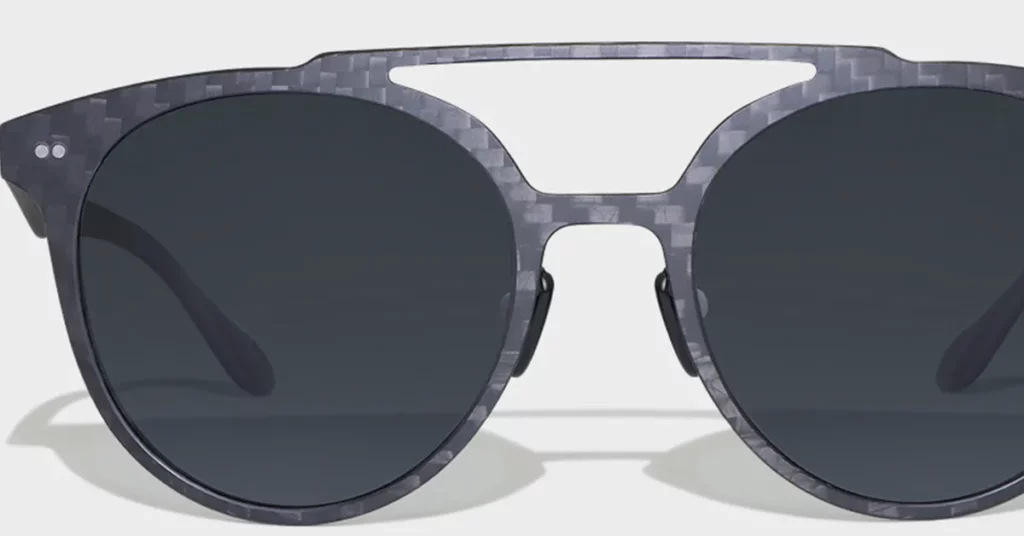
A Strategic Comparison: Carbon Fiber vs. Other Materials
Understanding these trade-offs helps you appreciate why specialized care is so important.
Carbon Fiber vs. Titanium
| Feature | Carbon Fiber | Titanium |
| Flexibility | Rigid, holds its shape perfectly. | Bends before breaking, flexible. |
| Weight | The lightest option available. | Extremely lightweight, but heavier than carbon fiber. |
| Adjustability | Cannot be adjusted by an optician. | Highly adjustable with proper tools. |
| Failure Mode | Brittle; can crack under sharp impact. | Ductile; will bend and deform before breaking. |
Carbon Fiber vs. Premium Acetate
| Feature | Carbon Fiber | Premium Acetate |
| Heat Adjustment | Cannot be adjusted with heat. | Easily adjusted with heat for a custom fit. |
| Fit Customization | Fit is fixed when manufactured. | Highly customizable for a perfect fit. |
| Durability | Superior strength-to-weight, but brittle. | Flexible and highly impact-absorbing. |
| Maintenance | Requires specialized chemical-free care. | Can be cleaned with standard eyewear products. |
Pro Tip: If you require a frame that can be minutely adjusted to fit the unique contours of your face, titanium or premium acetate are more suitable choices. Carbon fiber is for those who prioritize absolute lightness and rigidity.
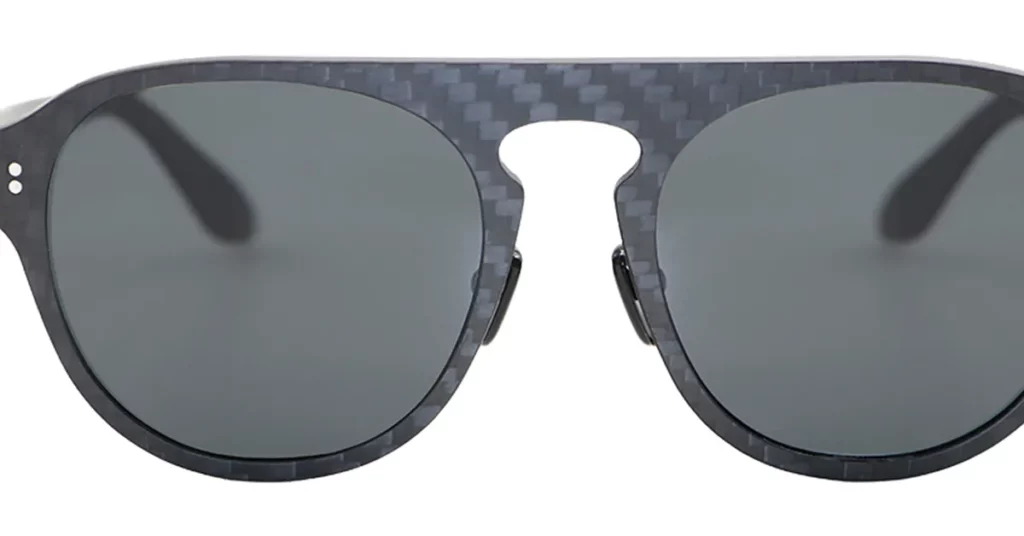
Conclusion
Proper maintenance of carbon fiber eyeglass frames is not about simple cleaning—it’s about preserving the advanced material science of a premium asset. By understanding that you are protecting the vulnerable resin matrix, not just the fibers themselves, you can make informed choices. Following these specific protocols for cleaning, storage, and handling will protect your investment and ensure your frames deliver unmatched performance and style for years to come. Always consult a professional for fitting and inspection.
Frequently Asked Questions
1. Can I use an alcohol wipe to clean my carbon fiber frames?
No. Alcohol-based products break down the epoxy resin matrix, which can cause the surface to become cloudy, discolored, or structurally weak over time.
2. Is it safe to leave my carbon fiber glasses in a hot car?
No. While the fibers are stable, extreme heat can soften and damage the binding resin, which could cause the frame to lose its shape or integrity. Always store them in a case in a temperature-controlled environment.
3. My carbon fiber frames have a small scratch. Can I polish it out?
For extremely light surface scuffs on a glossy finish, a specialized, non-abrasive polish made for carbon fiber composites may work. However, for any scratch deep enough to be felt with a fingernail, you must consult a professional optician.
4. Can an optician adjust my carbon fiber frames to fit better?
No. Carbon fiber frames are fundamentally rigid and cannot be adjusted with heat or bending like other materials. The fit is determined during manufacturing, which makes the initial fitting critically important.
5. Why are carbon fiber frames so much more expensive?
The high cost reflects both the expensive raw materials and the complex, labor-intensive manufacturing process needed to layer, mold, and finish the composite to precise standards.